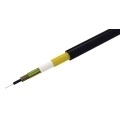Enhancing Efficiency and Reliability in Indoor Optical Cable Installations

Designing indoor optical cable wiring in a structured and efficient manner is crucial for ensuring seamless connectivity and reliable data transmission. This article aims to provide a comprehensive overview of the principles and skills involved in indoor optical cable wiring, enabling professionals to implement high-quality installations.
1. Planning and Preparation
Prior to the actual installation, thorough planning and preparation are essential. The following considerations should be taken into account:
• Determine the appropriate optical cable type, taking into consideration factors such as environment, transmission distance, and required bandwidth.
• Assess the pathway and plan the cable routing, ensuring that it avoids potential interference sources such as electromagnetic fields or high-temperature areas.
• Ensure the availability of necessary equipment, including fiber optic cables, connectors, splicers, termination boxes, and testing tools.
2. Proper Cable Installation Techniques
During the installation process, various techniques should be employed to ensure the optimal performance of indoor optical cable wiring:
• Adequate cable support: Use appropriate cable trays, supports, and clamps to prevent stressing or pulling of cables. This minimizes the risk of damage and maintains signal integrity.
• Neat and organized cable management: Bundle and label cables properly to facilitate identification and simplify future maintenance or modifications.
• Cable bending radius: Adhere to the specified minimum bending radius to avoid excessive signal loss or cable damage.
• Suitable termination methods: Whether using connectors or splices, employ proper termination techniques to ensure reliable and low-loss connections.
3. Testing and Troubleshooting
Thorough testing is essential to verify the quality and reliability of the installed optical cable wiring. The following steps should be performed:
• Optical power testing: Measure the transmitted power levels at various points along the cable using an optical power meter to ensure they meet the specified requirements.
• Optical time-domain reflectometry (OTDR): Utilize OTDR to assess the overall length of the cable, identify potential faults, and determine their locations.
• Troubleshooting: In the event of signal loss or degradation, perform troubleshooting techniques such as visual inspection, reconnecting connectors, or replacing damaged components.
In summary, by adhering to sound design principles and employing the appropriate skills, indoor optical cable wiring installations can be executed with efficiency and reliability. This ensures optimal performance and minimizes the risk of connectivity issues or data transmission failures.



